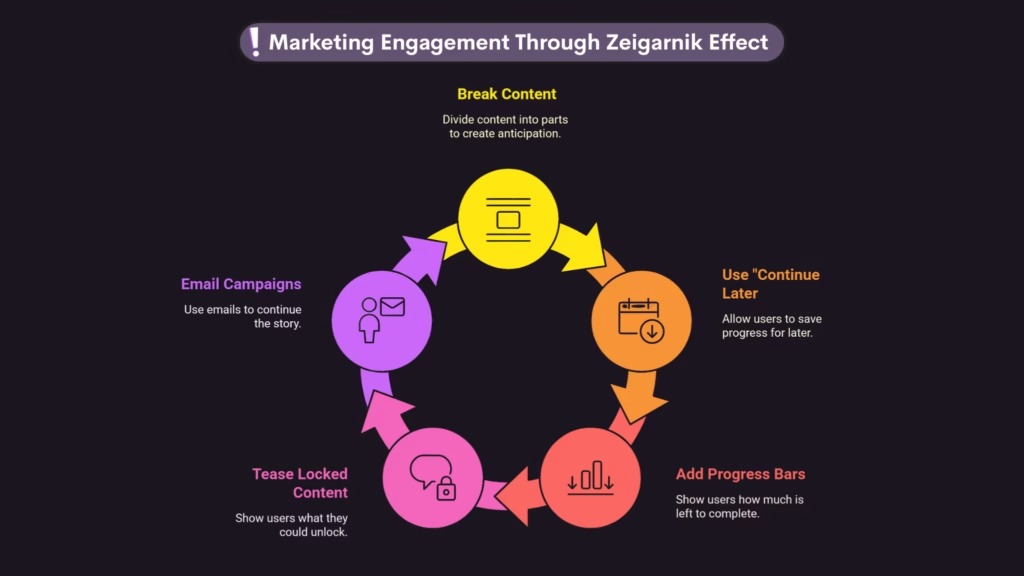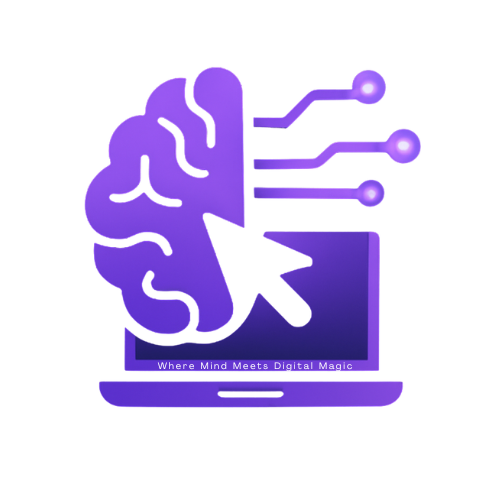Ever started a Netflix show and thought, “Just one more episode,”… and suddenly it’s 3 a.m.?
That, is the Zeigarnik Effect in action — a powerful psychological principle that plays with your brain’s need for closure.
And get this: you can use it to your advantage on your website, brand, or business to keep users engaged, curious, and obsessed with your content.
Let’s unravel this mind-hack and how it powers everything from binge-worthy apps to high-converting websites.
What Is the Zeigarnik Effect?
The Zeigarnik Effect is named after psychologist Bluma Zeigarnik, who noticed that waiters remembered unfinished orders better than completed ones. Once a task is done, the brain lets it go. But if it’s not? Your mind holds onto it — looping back again and again until it gets closure.
This happens because incomplete tasks create mental tension, like an open tab in your brain. Your subconscious wants to “complete the loop,” and that desire creates lasting engagement.
The Zeigarnik Effect: Why Our Brain Hates Unfinished Business
Here’s the brain science part (but fun):
When you leave a task hanging, it activates your brain’s reticular activating system (RAS) — the filter that decides what deserves attention. Unfinished things jump to the top of the list, creating a mini alert in your brain that whispers, “Don’t forget me!”
In the world of consumer behavior, this effects:
- Triggers memory retention (brand recall)
- Increases engagement time
- Boosts emotional investment
This is free attention we’re talking about. And in today’s scroll-heavy world, that’s quite pure gold.
How Websites & Apps Use the Zeigarnik Effect
Let’s spill the digital tea. Companies are obsessed with using the Zeigarnik Effect to make us stay, click, and buy.
Here’s where it shows up most:
Progress Indicators
From quizzes to sign-ups, when a bar says “25% complete,” you suddenly feel like finishing. The journey becomes a mission.
Locked Steps
“Unlock next lesson by completing the first.”
Even if you didn’t love the lesson, you’re now emotionally committed.
Incomplete Checklists
Ever seen a to-do app with one item left unchecked? You can’t resist ticking it off.
This triggers a dopamine release, tying emotion to task completion — and to your brand.
Abandoned Cart Emails
“Still thinking it over?” These emails re-ignite the open loop in your head: “Wait, I didn’t finish that…”

Gamification + Zeigarnik = User Obsession
Gamification in marketing is when apps make tasks feel like games — and Zeigarnik fits perfectly into this strategy.
Apps like:
- Duolingo (streaks, half-finished lessons)
- Nike Run Club (progress toward badges)
- Canva (“Just one more design step to go!”)
…use open loops to create urgency and encourage habit formation.
When users feel they’ve started something — even slightly — they’re way more likely to return and finish it.
Why This Works So Well for Marketers
Here’s why the Zeigarnik Effect works in marketing:
- Curiosity = Clicks
Titles like “Part 1: The Secret Behind…” make people need to read part 2. - Mental Real Estate
The open loop sticks in their mind even after they leave your site. - Higher Engagement
Incomplete quizzes, questions, or steps increase time spent on page.
It’s literally a brain-hack for attention — backed by neuroscience and used by the smartest digital marketers out there.
Using the Zeigarnik Effect in User Experience and Marketing
Here’s your glow-up list of ways to use this effect like a marketing expert:
✨ 1. Break Big Content into a Series
Write a multi-part blog series and leave cliffhangers. Let readers know more is coming:
“In Part 2, we’ll reveal how to actually implement this on your own site.”
✨ 2. Use “Continue Later” Features
Let users save their progress — it mentally “tags” them to come back. Perfect for eBooks, quizzes, and forms.
✨ 3. Add Progress Bars to Forms
Show how much is left (“Step 2 of 3”) so users don’t bail. Bonus: it feels satisfying to complete.
✨ 4. Tease Locked Content
Show them what they could get if they subscribe or log in.
“You’re 1 step away from unlocking your free checklist!”
✨ 5. Email Campaigns that Continue a Story
Start with something that hooks and say, “Tomorrow, you’ll get the real reason why…” And they’re hooked.

Real-World Wins with the Zeigarnik Effect
Let’s talk results. Brands using Zeigarnik strategies have seen:
- 30–40% increase in user return rate
- Up to 2x higher form completion
- Longer session durations
- Higher conversion rates in sales funnels
And when paired with user experience psychology and user engagement metrics, you’ve got a digital powerhouse that keeps users loyal.
💬 Want to unlock more secrets of the digital mind?
Check out our guide on how digital psychology shapes the way we scroll, shop, and click — it’s packed with insights you won’t want to leave unfinished 👀💡
Read the article: Digital Psychology: 7 Ways It Shapes How You Think, Click, and Interact Online
Final Thoughts: Keep Them Hooked
Sometimes, the smartest marketing strategy isn’t giving everything at once — it’s holding just enough back to keep people curious.
Whether it’s an unfinished quiz, a cliffhanger blog post, or a tiny little progress bar, the Zeigarnik Effect is your secret weapon for attention and loyalty.
So go ahead — leave the door slightly open. Because once your visitors peek in, they’ll have to come back for more.
Frequently Asked Questions
According to psychology, not finishing jobs makes us feel tense, and that stress stays with us. The brain keeps telling us of acts we didn’t finish, which makes them more memorable. This is known as the Zeigarnik Effect.
A psychology idea called the Zeigarnik Effect tries to explain why people remember things better when they are not finished. It’s used a lot in marketing, user experience design, and methods for getting things done.
The Zeigarnik Effect and procrastination go hand-in-hand. When you delay tasks, your brain holds onto the tension of not finishing them, which increases stress — and ironically, keeps the task fresh in your mind.
There are cliffhangers in TV shows, half-done to-do lists, and games that stop just before the final level that all show the Zeigarnik Effect. People keep coming back for more when things are left unfinished.
A big part of keeping users interested is the Zeigarnik Effect. It helps brands make ads, content, and apps that leave just the right amount of open business to keep people interested and make them want to come back.
